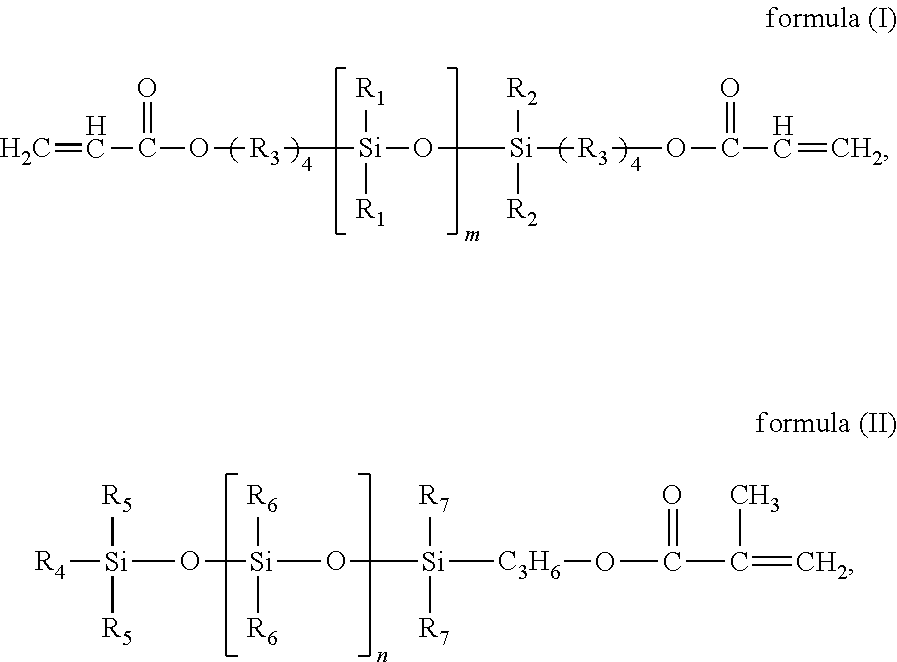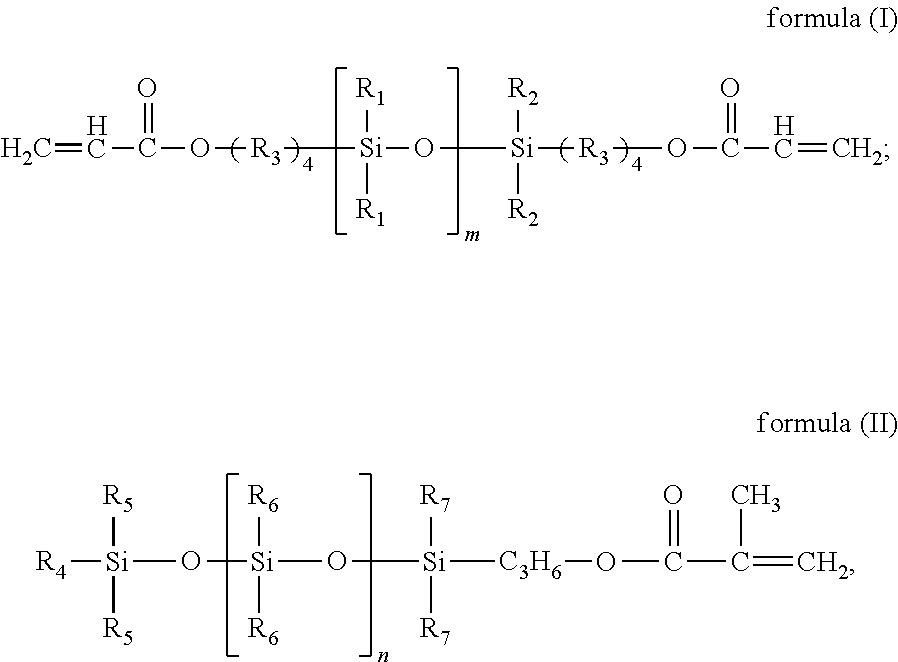Method for manufacturing contact lenses and contact lenses manufactured therefrom
- Summary
- Abstract
- Description
- Claims
- Application Information
AI Technical Summary
Benefits of technology
Problems solved by technology
Method used
Image
Examples
example
Example 1
[0049]Using photoinitiator to prepare contact lenses without solvent
A. The Preparation Steps of Example 1-1 to Example 1-3
[0050]1. A first siloxane macromer, a second siloxane macromer, a N-vinylpyrrolidone (NVP), a 2-hydroxyethyl methacrylate (HEMA) and a ethylene glycol dimethacrylate (EGDMA) were mixed to form a mixture in a 20 ml sample bottle, the mixture was stirred about 10 minutes until the mixture became transparent, then a dye was added and stirred about 10-15 minutes. After the dye was dissolved, a photoinitiator, 2,4,6-trimethylbenzoyl diphenyl oxide (TPO), was added and stirred about 15 minutes to form a mixture for manufacturing contact lenses. The compositions of Example 1-1 to Example 1-3 are shown in Table 1 respectively. Wherein, the first siloxane macromer is represented by the following (III), and the molecular weight of which is about 3,300:
[0051]The second siloxane macromer is represented by the following (IV), and the molecular weight of which is abou...
example 2
[0063]Using thermal initiator to prepare contact lenses without solvent
A. The Preparation Steps of Example 2-1 to Example 2-6
[0064]1. A first siloxane macromer, a second siloxane macromer, a N-vinylpyrrolidone (NVP), a 2-hydroxyethyl methacrylate (HEMA), a dimethylaminoethyl methacrylate (DMA), a crosslinking agent ethylene glycol dimethacrylate (EGDMA), an UV-blocking agent, a dye and a thermal initiator, azobisisoheptonitrile (ADVN), were mixed and stirred for about 1 hour to form a mixture for manufacturing contact lenses. The compositions of Example 2-1 to Example 2-6 are shown in Table 2 respectively. Wherein, the first siloxane macromer is represented by the following (III), and the molecular weight of which is about 3,300:
[0065]The second siloxane macromer is represented by the following (IV), and the molecular weight of which is about 1,000:
[0066]2. The mixture for manufacturing contact lens was injected into a mold of contact lens made of polypropylene (PP) and was placed i...
PUM
| Property | Measurement | Unit |
|---|---|---|
| Temperature | aaaaa | aaaaa |
| Temperature | aaaaa | aaaaa |
| Time | aaaaa | aaaaa |
Abstract
Description
Claims
Application Information
 Login to View More
Login to View More - R&D
- Intellectual Property
- Life Sciences
- Materials
- Tech Scout
- Unparalleled Data Quality
- Higher Quality Content
- 60% Fewer Hallucinations
Browse by: Latest US Patents, China's latest patents, Technical Efficacy Thesaurus, Application Domain, Technology Topic, Popular Technical Reports.
© 2025 PatSnap. All rights reserved.Legal|Privacy policy|Modern Slavery Act Transparency Statement|Sitemap|About US| Contact US: help@patsnap.com



